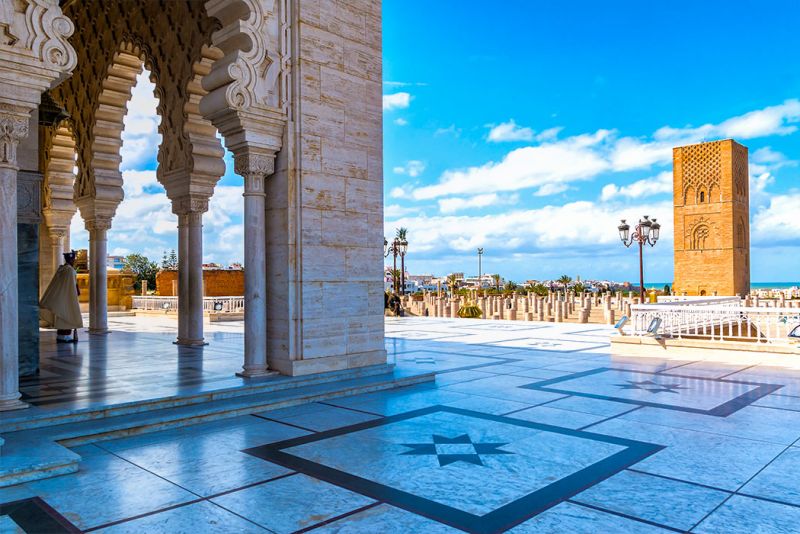Welcome in RABAT
Rabat, the capital of Morocco, is built on the banks of the Bouregreg River and the Atlantic Ocean. It is known for its sites of interest, which illustrate both Islamic and French colonial heritage
Rabat, the capital of Morocco, is built on the banks of the Bouregreg River and the Atlantic Ocean. It is known for its sites of interest, which illustrate both Islamic and French colonial heritage

Hassan Tower or Sawm’at Hassan in Arabic, referring to the significant minaret shaft following the special Moroccan and Spanish style of architecture of the same time. The minaret was projected to be the largest of its type of all time around the world, yet – unfortunately – the construction processes stopped suddenly following the sudden death of al-Mansur in 1199.

The Oudaya Kasbah is a haven of tranquility, with its flower-filled little streets, Andalusian garden, and Moorish café. Referred to also as Kasbah of the Udayas, the Oudaya Kasbah is one of the most unique sites in Morocco and is the first milestone of the city of Rabat. It’s located at the mouth of the Bou Regreg River, opposite the city of Salé, in Rabat, Morocco. UNESCO recognized the significance of the Oudaya Kasbah and added it to the World Heritage Tentative List in 2006.

The Chellah is a walled ruin of a town that lies in a short walk from the current medina of Rabat, south of the Ville Nouvelle. Designated a World heritage Site in 2012, it is the most popular tourist attraction in Rabat and houses both Roman ruins and a medieval Muslim necropolis. Abandoned in 1154 and damaged further by the Lisbon earthquake in 1755 it is an overgrown and atmospheric site adorned by storks’ nests, and a fascinating place to meander around.

One more time Almohad Caliphate impressing the Moroccan architectural heritage with a master-attraction in the capital, Rabat. The Minaret of the un-complete mosque during the reign of Abu Yusuf Yaqub al-Mansur, the 3rd caliph of the same family lineage in 1195.
Hassan Tower or Sawm’at Hassan in Arabic, referring to the significant minaret shaft following the special Moroccan and Spanish style of architecture of the same time. The minaret was projected to be the largest of its type of all time around the world, yet – unfortunately – the construction processes stopped suddenly following the sudden death of al-Mansur in 1199.
Built in the 12th century by the Almohads, it was originally called Mehdiya. It is the kasbah which gave its name to the city. The Ribat is in fact a fortified convent and it is here that the monks-soldiers who went to a holy war in Spain against the Christians settled.
When the Moriscos, the Andalusians driven out of Spain, landed there at the beginning of the 17th century, it took the name of Kasba Andalouse and even became an autonomous republic of corsairs (with Salé) from 1621 to 1647. It was in 1833, when the Oudaya tribe driven out of Fez by Sultan Moulay Abderrahman settled there, which was definitely given the name of Kasba des Oudayas (or Kasbah des Oudaïas).


It is among the oldest Moroccan libraries that have formed the modern network of public libraries. Created in 1933 by the habous services, it was separated from the mosque and endowed with a modern, rich and multilingual book collection. Then it was attached to the General Library which provided it with a copy of each work received as part of legal deposit. Restored and fitted out in 1999, it is currently equipped with books and library and computer equipment. In January 2002 it was inaugurated by the Minister of Culture and Communication. The Bab Chellah Library is currently specialized in the History of Morocco.
read more .....png)
.png)

